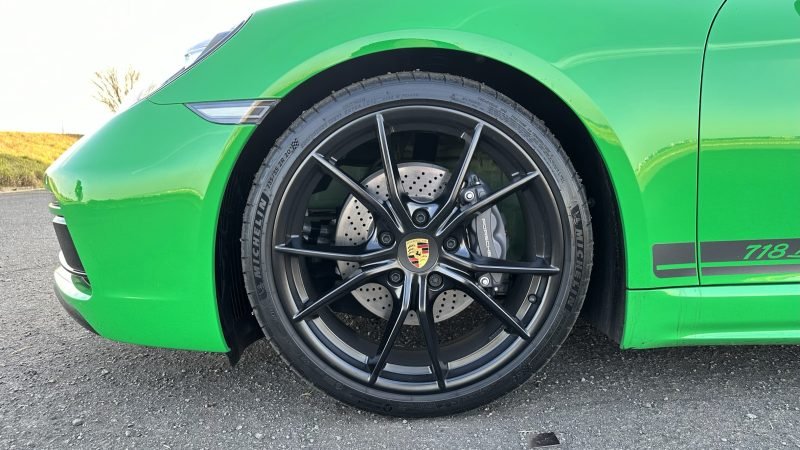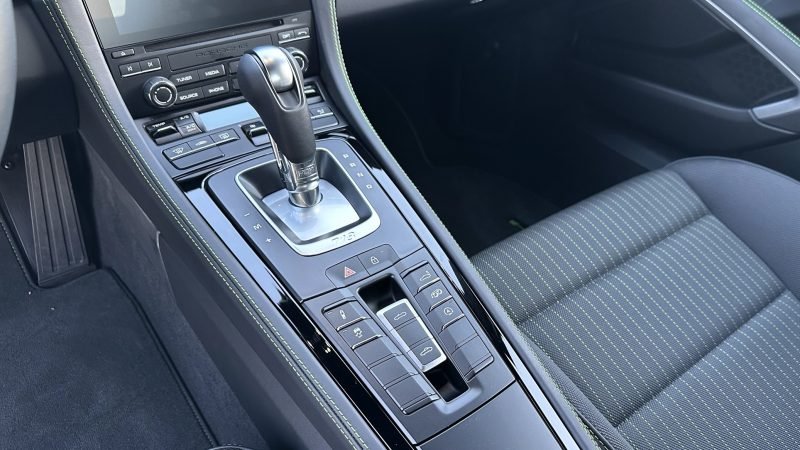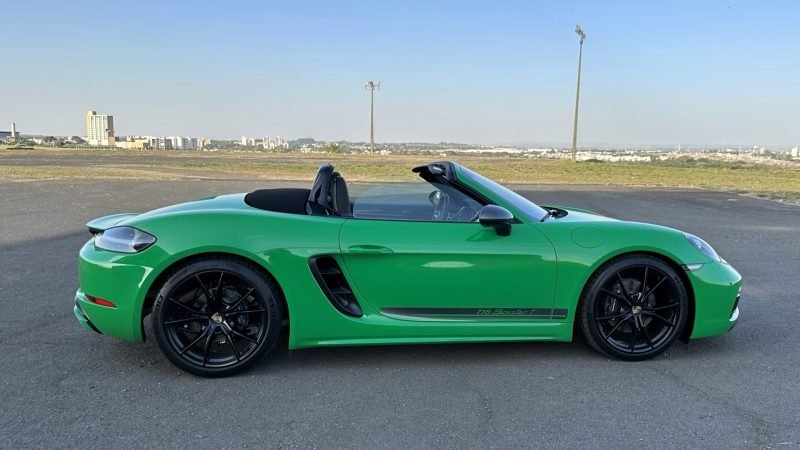
The adoption of the 4-cylinder boxer turbo engine in the Porsche 718 in 2016 was something that was difficult for fans of the brand to swallow, but it was certainly a wise decision by the German company that left its entry-level vehicle well-positioned against the competition. The Boxster T is not the cheapest version of the line, as the 718 Cayman coupé is cheaper, even so the value of R$ 555 thousand announced on the brand’s website can still be increased by many options, which in the case of the tested vehicle is week already reaches the mark of R$ 650 thousand.
Engine and Gearbox
Engine with a relatively small stroke of the pistons (76.4 mm) in relation to the diameter (91 in this case) allows to reach much higher revs more easily and without presenting annoying vibrations. And that’s what we found when accelerating at full speed and seeing the rev counter going up to 7,200 rpm to make the gear changes.
The maximum power of 300 hp appears at 6,500 rpm, while the maximum torque has a flat curve at the level of 38.7 m·kgf between 1,950 and 4,500 rpm, thanks to the double volute turbocharger and electromechanical control of the relief valve, in addition to the other technologies used in this engine, such as the phase variation in the intake and exhaust commands.
The automatic double-clutch transmission in an oil bath has 7 forward gears with quick couplings in all conditions of use. But when the use is very tame the exchange becomes nervous and ends up causing some bumps in the couplings. But nothing that an extra accelerator won’t make him more behaved. Shifts in manual mode can be done using the paddles behind the steering wheel or the lever itself (upshifting by tapping backwards).

When switching between Normal, Sport and Sport Plus driving modes, there is an immediate change in the response of the accelerator pedal and the gearbox raises the point of automatic gear changes. In Sport Plus mode, the rear differential self-locking system is activated, further improving traction capacity when cornering.
It’s understandable that the switch to this 2-litre 4-cylinder engine has robbed some of the brand’s key features, but it’s still fast and precise as every enthusiast expects.

Great sports car
Not many 2-seater convertible mid-engined sports cars are available in the world today. The Jaguar F-Type Cabrio and the BMW Z4 would be the main competitors of the 718 Boxster T.
Externally the car appears very compact and with good balance in the lines. The 20” wheels fill the fenders well and the oval headlights show the brand’s DNA. The front grilles house huge radiators to provide liquid cooling for the engine, and are complemented by the oil radiators, intercooler and air conditioning condenser.
At the rear, a small airfoil rises at high speeds or when Sport and Sport Plus modes are engaged, providing greater downforce (downforce) on the rear axle. In the lower central part are the two side-by-side exhaust outlets, a detail that delights.
Along the entire body, there are few creases, a characteristic of Porsche designs, but the large air intakes on the sides draw the attention of any layman. This is where fresh air is admitted to the engine.
The electromechanical opening of the roof takes about five seconds and can be done with the car moving at up to 50 km/h. When open, it is fully retracted in the compartment behind the seats and makes the car more charming. The bars behind the seats provide the necessary security in the event of a rollover and between them there is a screen to prevent the backflow of air into the interior of the cabin. A further refinement of comfort for the occupants.
Traveling with the roof open is not the best option for the hot sunny winter days that we are experiencing in the Southeast, but in the cool of the afternoon it is a pleasure to be able to drive in that condition, and at dusk to appreciate the moonlight and the stars. The 718 Boxster T turns out to be two cars: one with a closed top ready to challenge the limits of speed, and another with an open top to enjoy and enjoy life.
Porsche Dynamics
McPherson type suspensions at the front and rear don’t detract from the well-accurate vehicle dynamics that Porsche cars usually have. In this case, the variable load dampers allow two damping load options (Normal and Sport), and can be selected together with the driving mode or randomly using the switch on the center console.
The difference in load is not huge, but enough to be felt by the driver and passenger. In Normal mode the car is still a sports car with quick responses and good handling. In Sport mode it is clear that the body control is greater, there is virtually no roll and even in the most acute braking you do not notice the dip of the front suspension.
The steering system is variable ratio, becoming faster as you approach the end of the course. This characteristic facilitates maneuvers at low speeds by requiring less steering wheel movement and provides greater safety and precision in high-speed curves, as with slower steering it is possible to have greater precision. The center definition of the steering system is very positive and in Sport and Sport Plus driving modes the increase in effort indexed to speed is more pronounced.
The four-wheel disc brake system with fixed-type calipers protects safety and is the key to good lap times on the circuit. Braking capacity is very good and when demanding to the maximum it is scary, as the 235/35R20 tires at the front and 265/35R20 at the rear, both with Z speed index and Michelin Pilot Sport 4 brand, have great grip.
cozy interior
The design of the interior of the 718 Boxster T can be considered well thought out, as it uses high quality materials that are pleasant to the touch. Upholstering the seats in fabric is a wise decision, preventing incidents of burning your legs when leaving the top open in the sun.
The steering wheel has a great grip and the only command on it is the driving mode selector, with an overtaking button in the center, which allows you to use all the power for 18 seconds. Two additional levers are positioned behind the steering wheel to control the trip computer and cruise control functions.
In the instrument panel, the tradition of the tachometer in the center is maintained, with a speedometer on the left and on the display on the right are the on-board information and other additional information on driving the vehicle. All selectable by the additional lever on the right.
The multimedia center requires a USB cable for pairing with Apple CarPlay and it is possible to accommodate the cell phone in the central compartment, under the armrest. Cupholders are built into the right-hand instrument panel. The two-zone air conditioning system would be unnecessary for such a small cabin, but at the end of the day, driving with the top closed, it is a very useful refinement.
Conclusion
It is obvious that with the roof open the sound of the 4-cylinder engine is not as eloquent as the old 6-cylinder atmospheric aspiration, but the agility, performance and efficiency pay that price. A car weighing just 1,365 kg in running order and capable of carrying up to 325 kg, accelerating from 0-100 km/h in 4.7 seconds to reach 200 km/h in 17.8 seconds and a top speed of 275 km /h, does not appear in any corner.